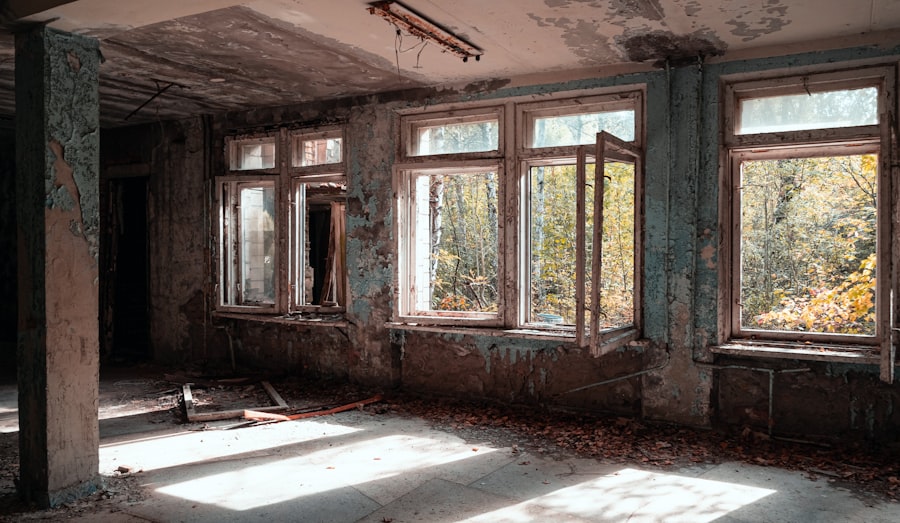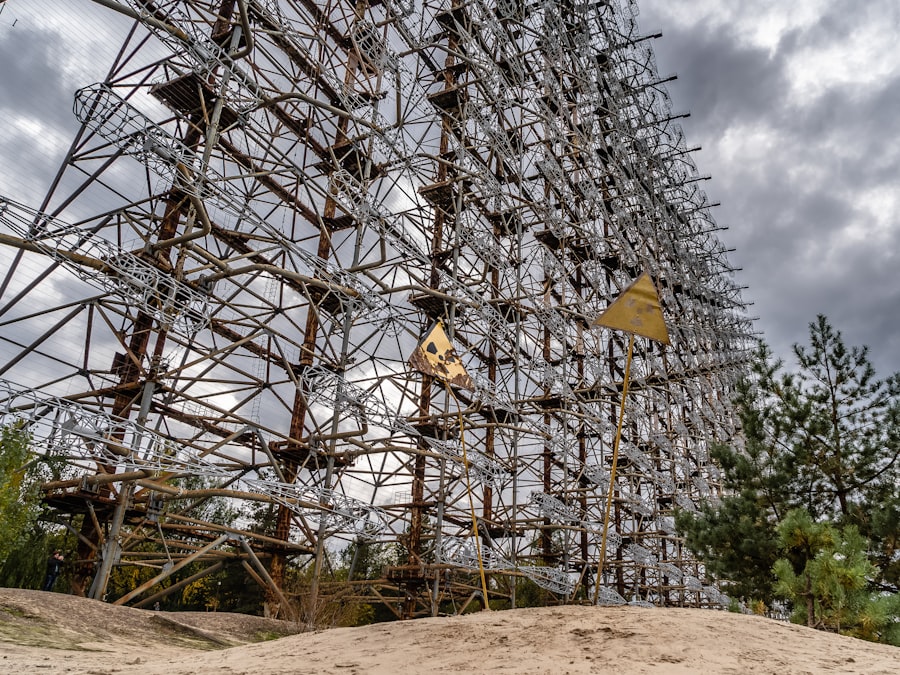The history of Ukraine is deeply rooted in the early settlement patterns that emerged in the region thousands of years ago. Archaeological evidence suggests that the territory now known as Ukraine was inhabited as far back as the Paleolithic era, with various tribes and cultures leaving their mark on the land. The Trypillian culture, which flourished between 5500 and 2750 BCE, is particularly notable for its advanced agricultural practices and large settlements.
These early inhabitants developed sophisticated pottery and engaged in trade with neighbouring regions, laying the groundwork for future civilisations. As time progressed, the area saw the arrival of various nomadic tribes, including the Scythians and Sarmatians, who roamed the steppes and contributed to the cultural tapestry of Ukraine. The fertile lands attracted these groups, who relied on both agriculture and animal husbandry.
The interactions between these nomadic tribes and settled agricultural communities fostered a dynamic exchange of ideas, technologies, and customs. This early period set the stage for the emergence of more complex societies, ultimately leading to the formation of powerful states in the region.
Summary
- The early settlement of Ukraine dates back to ancient times, with evidence of human habitation as early as 32,000 BC.
- The Kievan Rus‘ period marked a golden age for Ukraine, with the city of Kiev becoming a major center of trade, culture, and Christianity.
- The Mongol invasion in the 13th century led to the rise of the Cossacks, who played a significant role in Ukrainian history and culture.
- The partitions of Poland in the 18th century and the emergence of Ukrainian nationalism set the stage for future struggles for independence.
- Ukraine suffered greatly under Soviet rule, with the Holodomor famine in the 1930s causing the deaths of millions of Ukrainians.
The Kievan Rus’ and the Golden Age of Ukraine
The establishment of Kievan Rus’ in the late 9th century marked a significant turning point in Ukrainian history. This federation of Slavic tribes, centred around the city of Kyiv, became a powerful political entity that laid the foundations for Ukrainian identity. Under the rule of Grand Prince Volodymyr the Great, who reigned from 980 to 1015, Kievan Rus’ experienced a cultural and religious renaissance.
Volodymyr’s decision to adopt Christianity from Byzantium in 988 not only unified the diverse tribes under a common faith but also opened the door to Byzantine cultural influences that would shape Ukrainian art, architecture, and literature. The Golden Age of Kievan Rus’ reached its zenith during the reign of Yaroslav the Wise (1019-1054). He implemented legal reforms, established schools, and promoted trade with Western Europe and the Byzantine Empire.
The codification of laws known as the “Russkaya Pravda” is a testament to this period’s advancements in governance and societal structure. The flourishing of literature during this time, exemplified by works such as “The Tale of Igor’s Campaign,” reflects a rich cultural heritage that continues to resonate in Ukrainian identity today. However, this golden age was not to last, as internal strife and external pressures would soon lead to its decline.
The Mongol Invasion and the Rise of the Cossacks

The Mongol invasion in the 13th century brought devastation to Kievan Rus’, leading to a significant transformation in the region’s political landscape. The Mongols, under Genghis Khan’s successors, swept through Eastern Europe, culminating in the sacking of Kyiv in 1240. This invasion shattered the unity of Kievan Rus’ and resulted in a fragmented political environment where various principalities struggled for power.
The Mongol Empire established its dominance over much of Ukraine, imposing tribute and exerting control over trade routes. In response to this turmoil, new social and military structures began to emerge, notably the Cossacks. These semi-nomadic warriors formed communities along the Dnieper River and other areas, developing a distinct identity characterised by their military prowess and democratic governance.
The Cossacks became known for their fierce resistance against foreign domination, particularly during the 16th and 17th centuries when they fought against Polish-Lithuanian rule. Their legendary leader, Bohdan Khmelnytsky, led a successful uprising in 1648 that sought to establish an autonomous Cossack state, marking a pivotal moment in Ukrainian history.
The Partitions of Poland and the Emergence of Ukrainian Nationalism
The late 18th century witnessed significant geopolitical changes with the partitions of Poland, which had profound implications for Ukraine. As Poland was divided among Russia, Prussia, and Austria between 1772 and 1795, large portions of Ukrainian territory fell under foreign control. This division fragmented Ukrainian society and culture, leading to varying degrees of autonomy and repression depending on the ruling power.
Under Russian rule, Ukrainian language and culture faced significant suppression, while Austrian-controlled regions experienced a different approach that allowed for some cultural expression. Amidst this backdrop of foreign domination, a sense of Ukrainian nationalism began to emerge. Intellectuals and writers sought to revive Ukrainian language and culture as a means of asserting national identity.
Figures such as Taras Shevchenko played a crucial role in this cultural renaissance through their literary works that celebrated Ukrainian folklore and history. Shevchenko’s poetry not only inspired a sense of pride among Ukrainians but also highlighted the struggles faced by their people under foreign rule. This burgeoning nationalism laid the groundwork for future movements advocating for independence and self-determination.
Ukraine under Soviet Rule and the Holodomor
The aftermath of World War I saw Ukraine caught in a tumultuous struggle for independence, ultimately leading to its incorporation into the Soviet Union in 1922. Soviet rule brought about significant changes in Ukraine’s political landscape, with policies aimed at collectivisation and industrialisation reshaping agricultural practices and societal structures. However, these policies had devastating consequences, most notably during the Holodomor—a man-made famine that occurred between 1932 and 1933.
The Holodomor resulted from harsh grain requisition policies imposed by Joseph Stalin’s regime, which sought to extract resources from Ukraine to fuel industrialisation efforts elsewhere in the Soviet Union. Millions of Ukrainians perished as a result of starvation, with estimates ranging from three to seven million deaths. This tragedy left an indelible mark on Ukrainian collective memory and identity, fostering resentment towards Soviet authorities.
The Holodomor is now recognised as a genocide by many scholars and governments worldwide, highlighting the extent of suffering endured by Ukrainians during this dark chapter in their history.
World War II and the Ukrainian Insurgent Army

The Initial Invasion and Its Aftermath
The initial invasion by German forces in 1941 led to widespread destruction and loss of life. Many Ukrainians initially viewed the Nazis as liberators from Soviet oppression; however, this perception quickly changed as Nazi policies implemented brutal repression against civilians, including mass executions and forced labour camps.
Resistance Movements Emerge
In response to both Nazi occupation and Soviet repression, various resistance movements emerged within Ukraine. One notable group was the Ukrainian Insurgent Army (UPA), which sought to establish an independent Ukrainian state free from both German and Soviet control. The UPA engaged in guerrilla warfare against occupying forces while also targeting Polish communities in western Ukraine amid rising ethnic tensions.
Conflicting Loyalties and Complexities
The complexities of this period are underscored by conflicting loyalties among different factions within Ukraine, as some collaborated with Nazi forces while others fought against them.
The Chernobyl Disaster and the Collapse of the Soviet Union
The Chernobyl disaster in April 1986 marked one of the most catastrophic nuclear accidents in history, with far-reaching consequences for Ukraine and beyond. The explosion at Reactor No. 4 at the Chernobyl Nuclear Power Plant released vast amounts of radioactive material into the atmosphere, leading to immediate evacuations and long-term health impacts for those exposed to radiation.
The Soviet government’s initial attempts to downplay the disaster exacerbated public distrust and highlighted systemic failures within the regime. As Ukraine grappled with the aftermath of Chernobyl, broader socio-political changes were unfolding within the Soviet Union itself. The policies of glasnost (openness) and perestroika (restructuring) introduced by Mikhail Gorbachev allowed for greater freedom of expression and political discourse.
In Ukraine, this environment fostered a resurgence of national consciousness as citizens began advocating for greater autonomy and independence from Moscow’s control. The growing discontent culminated in mass protests demanding reform and ultimately contributed to Ukraine’s declaration of independence on August 24, 1991.
The Orange Revolution and the Euromaidan protests
The early 21st century witnessed significant political upheaval in Ukraine, most notably exemplified by the Orange Revolution in 2004-2005. Triggered by widespread allegations of electoral fraud during the presidential election between Viktor Yanukovych and Viktor Yushchenko, millions of Ukrainians took to the streets demanding fair elections and democratic reforms. The peaceful protests highlighted a deep-seated desire for change among citizens who were disillusioned with corruption and authoritarianism.
The Orange Revolution succeeded in its immediate goals; Yushchenko was eventually declared president after a re-run of the election. However, underlying tensions persisted as political divisions continued to plague Ukrainian society. Fast forward to late 2013 when protests erupted once again—this time known as Euromaidan—sparked by Yanukovych’s decision to suspend an association agreement with the European Union in favour of closer ties with Russia.
The protests escalated into a broader movement advocating for democratic governance, human rights, and European integration. As clashes between protesters and security forces intensified, resulting in tragic loss of life, international attention turned towards Ukraine’s struggle for self-determination. The Euromaidan protests ultimately led to Yanukovych fleeing office in February 2014 but also set off a chain reaction that would see Russia annex Crimea later that year and ignite conflict in Eastern Ukraine.
These events underscored not only Ukraine’s ongoing quest for sovereignty but also its complex relationship with both Europe and Russia—a narrative that continues to unfold today amidst ongoing geopolitical tensions.
FAQs
What is the history of Ukraine?
The history of Ukraine dates back to ancient times, with evidence of human settlement in the region dating back to at least 32,000 BC. Throughout its history, Ukraine has been influenced by various empires and cultures, including the Kievan Rus, the Mongol Empire, the Polish-Lithuanian Commonwealth, the Russian Empire, and the Soviet Union.
When did Ukraine gain independence?
Ukraine declared its independence from the Soviet Union on August 24, 1991, following the failed coup attempt in Moscow. The declaration of independence was supported by a referendum in which over 90% of Ukrainian voters chose independence.
What are some key events in Ukraine’s history?
Some key events in Ukraine’s history include the establishment of the Kievan Rus in the 9th century, the Mongol invasion in the 13th century, the Union of Lublin in 1569 which brought Ukrainian territories under Polish rule, the Cossack uprisings in the 17th century, and the Holodomor famine in the 1930s.
What is the significance of the Orange Revolution?
The Orange Revolution was a series of protests and political events that took place in Ukraine from late November 2004 to January 2005. It was a response to widespread allegations of electoral fraud during the 2004 presidential election. The protests led to a revote and the eventual victory of Viktor Yushchenko, marking a significant moment in Ukraine’s modern history.
How has Ukraine’s history influenced its culture?
Ukraine’s history has had a significant impact on its culture, resulting in a diverse and rich cultural heritage. The country’s history of being influenced by various empires and cultures has contributed to its unique blend of traditions, languages, and customs. Additionally, historical events such as the Holodomor and the Chernobyl disaster have had a lasting impact on Ukrainian literature, art, and music.


